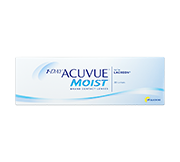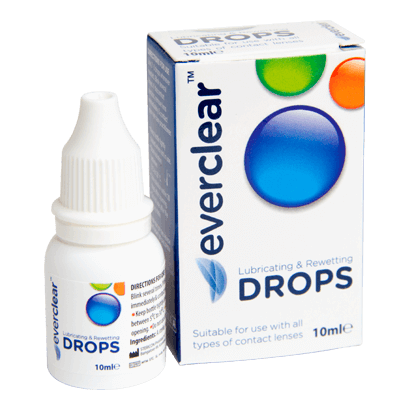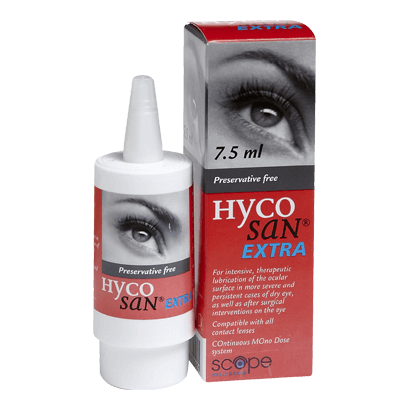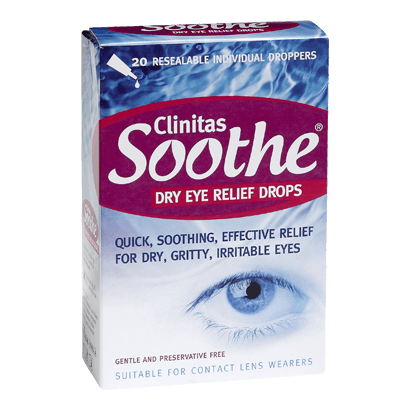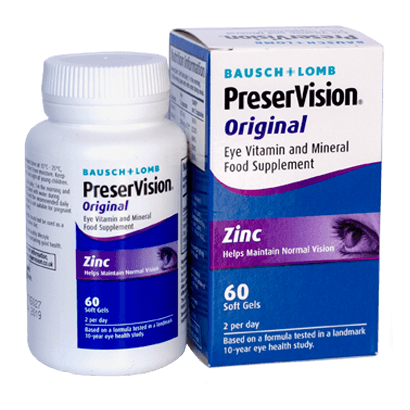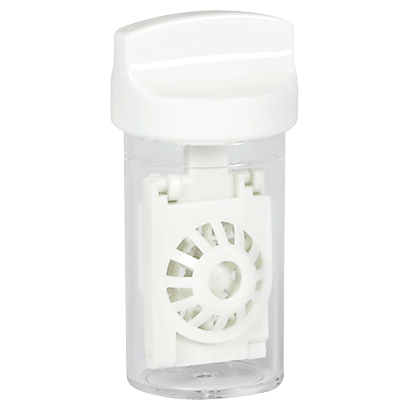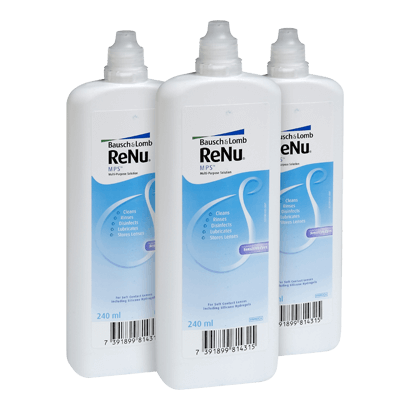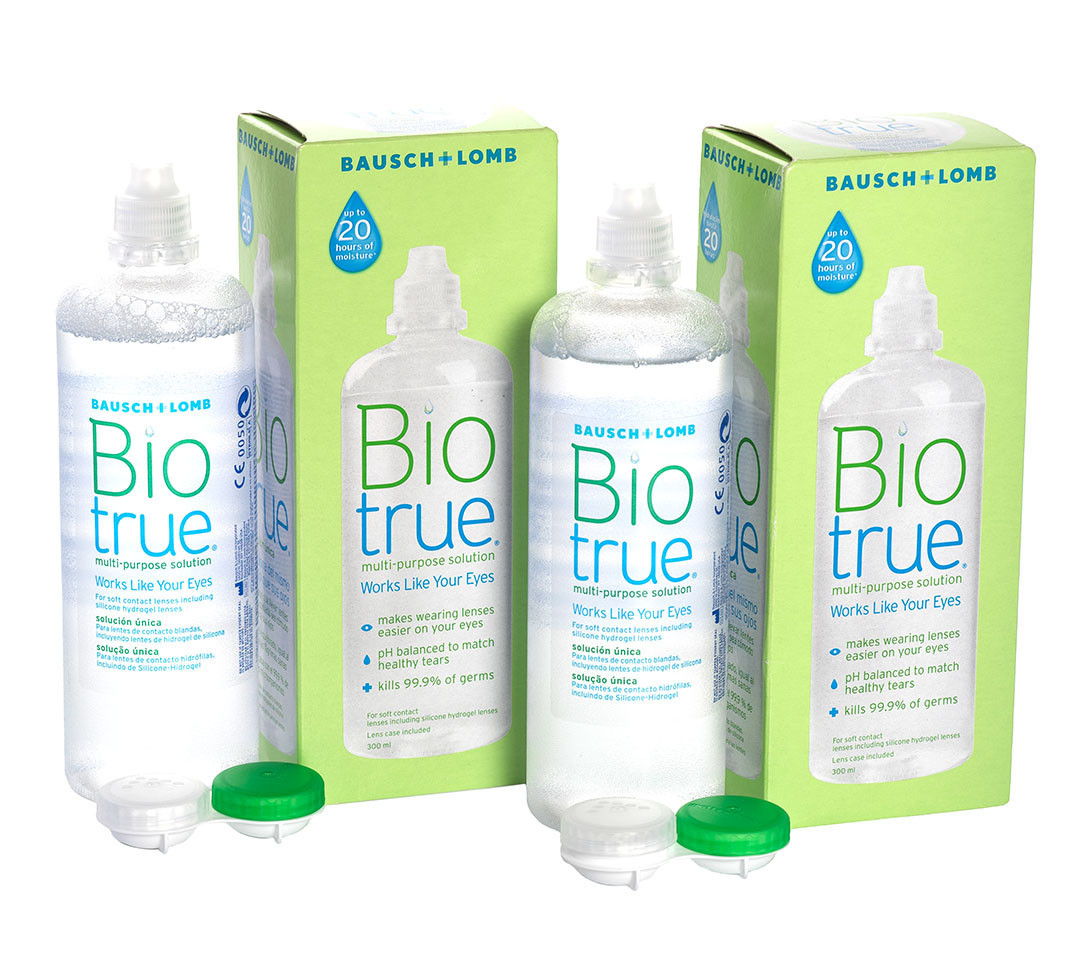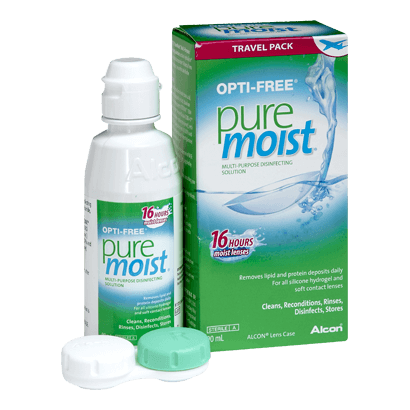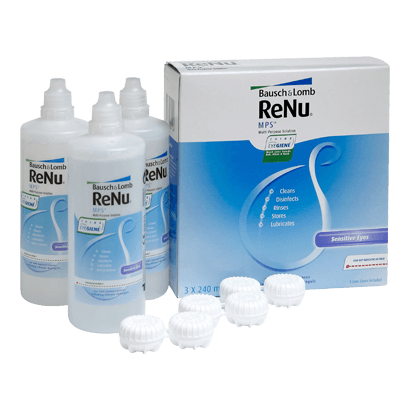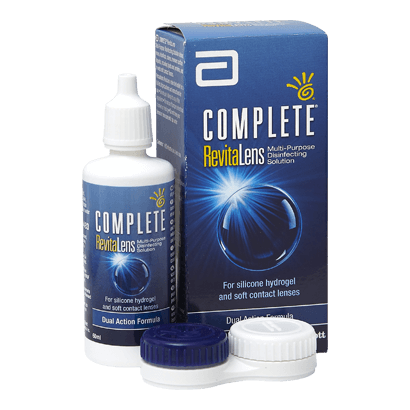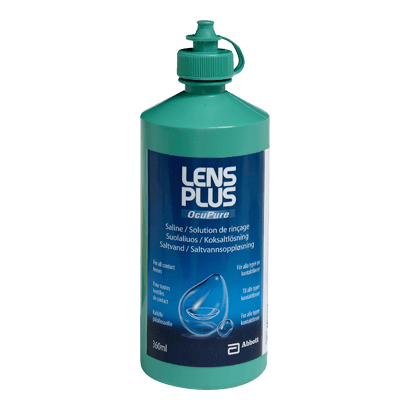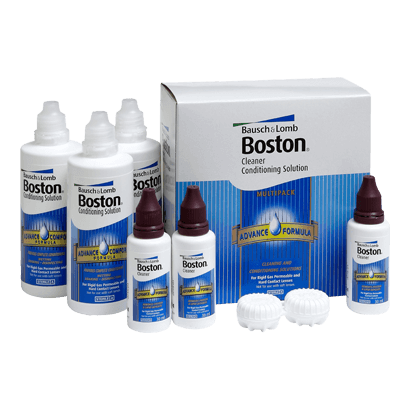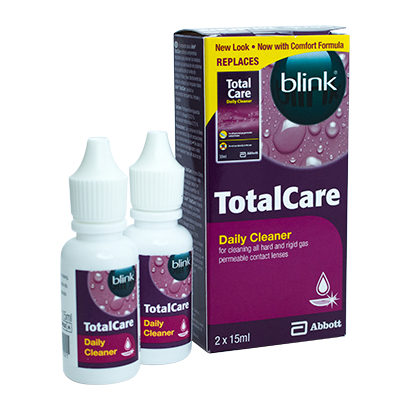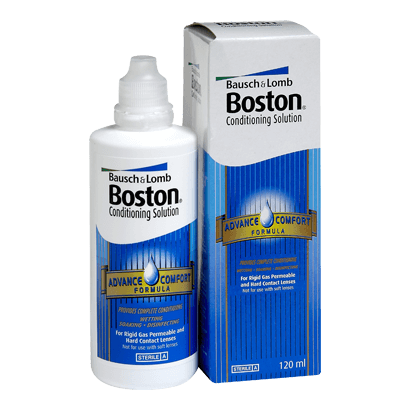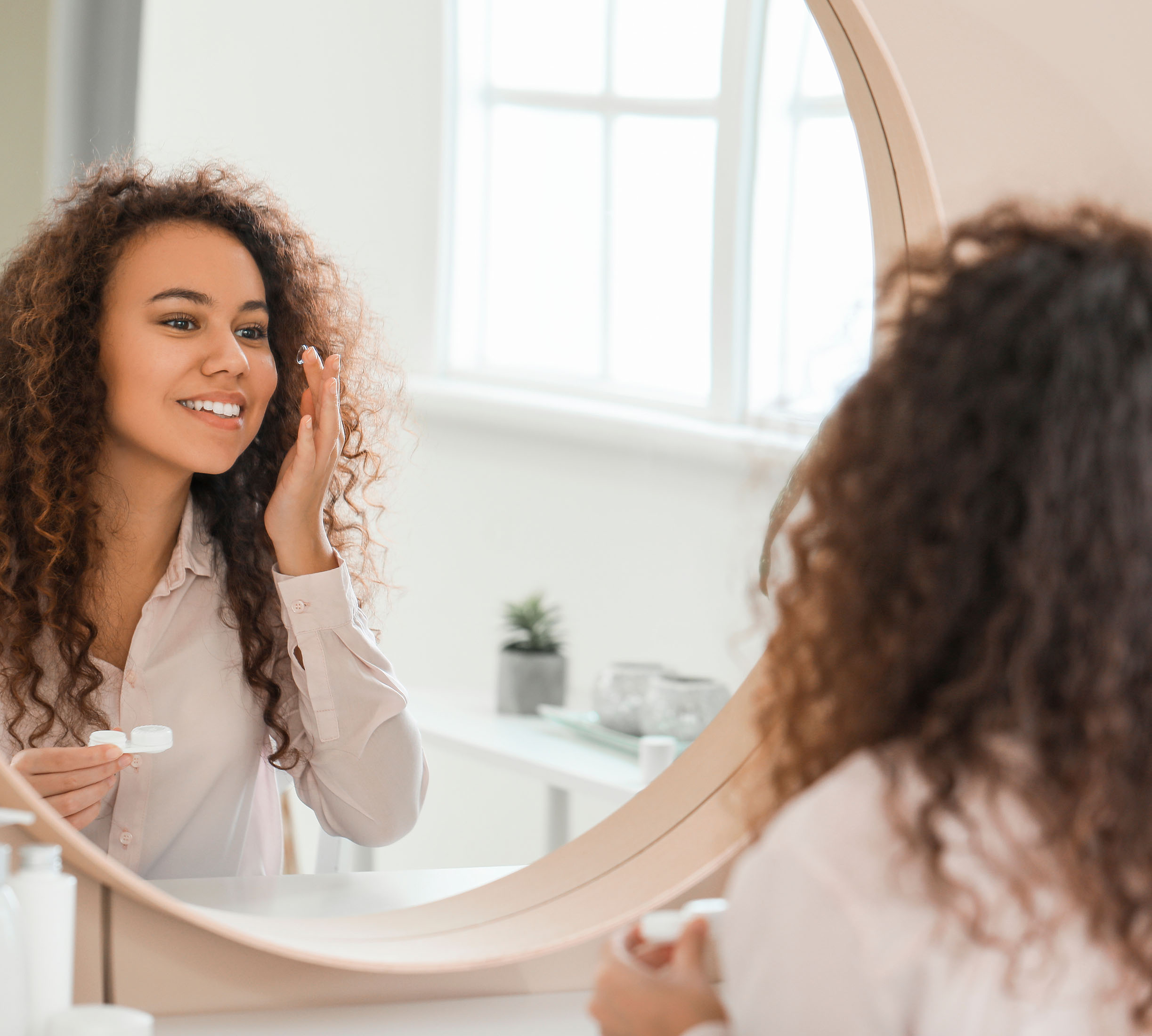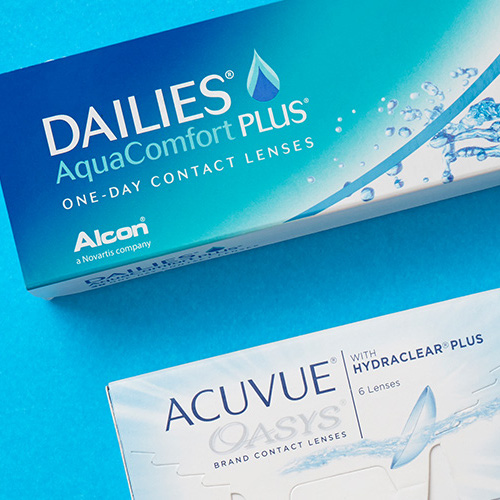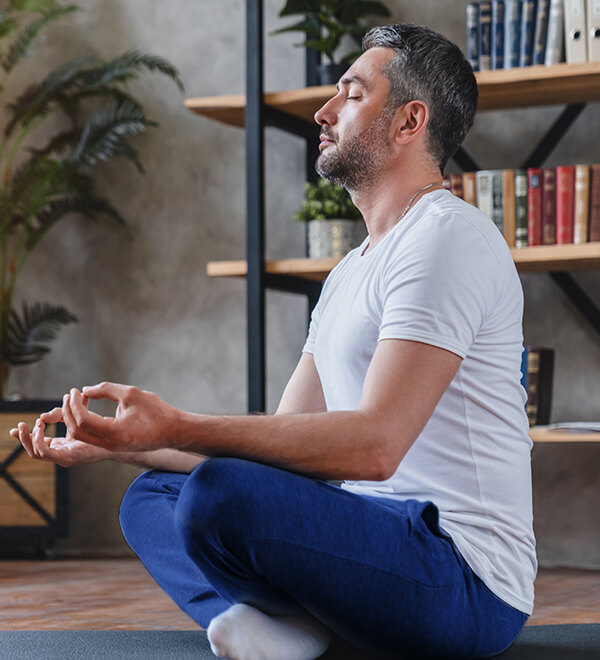
Calling all contact lens newbies - welcome to the exciting world of convenience, comfort and clearer vision! It might take a little while to ease into your new eye care routine - especially when it comes to putting contact lenses in - we hear you, and there's no denying that the first time won't feel strange! But not to worry, as we're here to guide you on your journey, from sorting out your prescription and picking the wearing pattern that works best for you to master the art of the application and removal process. Practice makes perfect (we promise!), and with our friendly optical expertise and insider know-how to help you along, you'll become a contact lens pro in no-time
First things first: get a prescription
You need to have a valid prescription to get the ball rolling, so book in to see an optician for an eye test and contact lens fitting. Even if you're a glasses wearer, the prescription for your contact lenses won't be the same. It's also possible to have different prescriptions for each eye, so make sure that you have the details for both when you order. Although having a valid prescription is essential, we'll spare you the lengthy process of verifying it, as we trust you to be proactive about your eye health. But if you do want a second pair of eyes to make sure it's all good, we're more than happy to take a gander.
Choose the perfect wearing pattern for you
When it comes to picking the wearing pattern of your contact lenses, it all boils down to what you'd prefer. Each option comes with pros and cons, so it's mainly what you think would be the most comfortable and best suited to your lifestyle - for the sporting enthusiasts, daily lenses are a no-brainer and the most hygienic - you can throw them away at the end of a session.
Overall, dailies are the most convenient way to go, as you just wear a new pair every day. The eye care routine is also completely hassle-free, and there's no need to stress about additional cleaning solutions or overnight lens storage. If you like to sometimes switch it up between glasses and contact lenses, dailies give you that flexibility, and none of them will go to waste.
Want to wear your lenses for longer? Try out two-weekly and monthly lenses. Lasting up to 30 days, these alternative wearing patterns could work for you, as long as you've got that cleaning and storing overnight business down. For those with jam-packed schedules, check out extended wear lenses, which you can even sleep in. To keep up with your eye care routine on holiday or a business trip, our compact travel pack, with everclear REFRESH All In One Solution and a Vision Direct lens case, is the answer. With any type of contact lenses, you'll need to be strict with yourself and stick to the manufacturer's wearing pattern, or what you optician recommends, avoiding any nasty eye infections or annoying irritations.
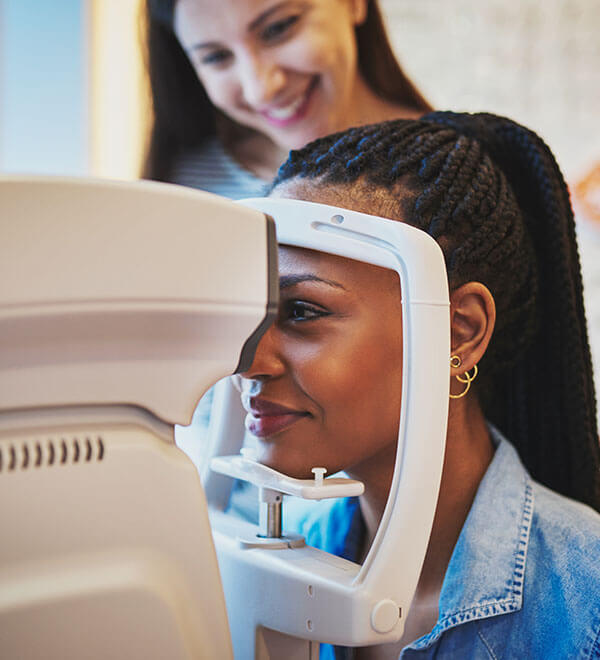
It's time to order
With your prescription all sorted, it's time to get ordering. It's super easy: all you have to do is find your lenses, fill in your prescription details and ta-da: ready for checkout. At first glance, reading your prescription might be a bit confusing and your optician might not explain what each value actually means. When ordering contact lenses for myopia (short-sightedness) or hyperopia (long-sightedness), you'll need to fill in the following values:
- Power: This is the level of vision correction you need to see clearly.
- Base curve: The measurement of your eye's natural curvature, so that the lenses sit securely on your eye. This is usually set by the manufacturer, but there may be more than one choice.
- Diameter: How wide the contact lenses should be.
If you've ever been told by an optician that you have astigmatism (a refractive error that causes blurred vision), you'll need to opt for toric lenses. Designed to fit the astigmatic eye comfortably and securely, these special lenses offer balanced and crystal-clear sight. With a toric lens prescription, you'll need to add the following 2 measurements:
- Cylinder: A number in measures of 0.25, this is the extra amount of vision correction needed to treat astigmatism.
- Axis: This is a number between 0 and 180 that tells you what angle your correction needs to be.
If you've got presbyopia, a common eye condition where you might find yourself squinting to read or drive, you'll probably need different prescriptions to be able to see at all distances. Multifocal contact lenses can combine multiple prescriptions, allowing for seamless quality of vision at all times. On top of power, diameter and base curve, your prescription for ordering multifocal lenses will also encompass:
- Addition: The amount of correction needed for near sight.
- Dominant eye: Your dominant eye will be labelled with a 'D'.
Putting in and taking out your lenses
Now for the fun part - it's time to bond with your new lenses! Putting in and removing your contact lenses is actually very easy - all it takes is getting the moves down before you get started. We've broken the process down into 4 simple steps:
- First, wash your hands thoroughly and dry them with a lint-free towel, so you can get the best grip.
- Then gently lift the lens from the packet onto your index fingertip.
- Hold your upper eyelid up while pulling down on your lower lid and place the contact lens over your iris (the coloured part of the eye that surrounds the pupil). If you find this tricky, try looking to the side and place it onto your sclera (the white part).
- Help it find its place by looking up and down, and blinking strongly - this also helps remove any air bubbles that might have formed. Once it feels comfortable, repeat the steps above for your other eye.
The thing is that applying contact lenses isn't really a one-size-fits-all process! It's all about what works best and feels comfortable for you. Whether the technique your optician showed you at your contact lens fitting wasn't quite right, or you want to work out how to put contact lenses in with long nails: our opticians have put together helpful video tutorials on how to put in and remove your lenses. The video guides simplify the process, taking you through all the steps you need to get the hang of it before you go for it.
But sometimes, things just don't go to plan, and you might get yourself in a bit of muddle trying to apply your lenses. If you do, it's important to give your eyes a break, take a breather and apply some eye drops. There's no point trying if your eyes are irritated, and after they've had a good rest, you can get going again.

Daily life with your lenses
Look at you go! You've nailed the other steps and just need to ease into your new routine. You'll realise in no time that switching from glasses to contact lenses was a fantastic idea, particularly for sporting enthusiasts, as they give you more freedom, clearer vision, and many even have in-built UV protection. Although, water-based activities like swimming and showering with your lenses is a no-no - if you do fancy a paddle or it's time to wash off at the end of the day, always make sure to take them out.
Be it a quick nap or bedtime, you can't sleep with your lenses in either, as this limits the amount of oxygen that can reach your eye, causing dryness and eye infections. If you do make the mistake (hey, we're all human), use some eye drops to provide instant relief. In fact, you'll find that eye drops are your best friend and can swiftly put you out of your discomfort. Whether you've been staring at the computer screen for too long, at a BBQ or out meandering on a windy day, eye drops will soothe those dry, irritated eyes. Unsure of the best technique to use to apply eye drops? Take a peek at our easy-peasy instructions.
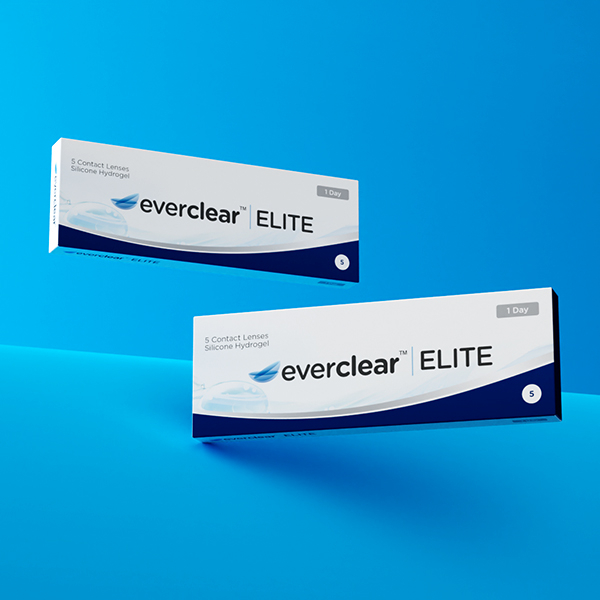
Try everclear ELITE
Exclusive to Vision Direct, everclear ELITE lenses are super-comfy and convenient, with an ultra-hydrating formula to lock in moisture throughout your day. These daily disposable lenses, made with silicone hydrogel material, allow oxygen to pass through to your eyes, so they stay and look healthy for up to 12 hours. Wearers with dry eyes will benefit from the hydrophilic design, formulated to put an end to irritations and stop any itchiness. Plus, UV blocking offers an extra layer of defence against harmful sun rays.
Discover everclear ELITE

